George Bellerose, a photojournalist from Weybridge, Vermont, has spent the last five years documenting the experiences of people who work in the forests of Addison County, Vermont. The Vermont Folklife Center has staged an exhibit based on this work, entitled “Portrait of a Forest: Men and Machines,” and Bellerose is also working on a book, due to be published in the summer of 2019. We’ll be excerpting portions of his interviews with loggers over the coming year, as they give a wonderful, first-person perspective on what the profession is like today in the Northeast. In this first installment, John Anderson reflects on his horse-logging days, a way of logging that’s all but disappeared in today’s mechanized world.
John Anderson grew up in Bowdoinham, Maine, a rural community of 1,500 in southern Maine. There was not a speck of sawdust in his childhood. Intensive-logging Maine was a six-hour drive to the north. His father was a partner in a small insurance business. His mother was a secretary and substitute teacher in the local elementary school. He went to school at Middlebury, and his college major, art history, similarly did not portend a life in logging. Career direction then: Zero.
Anderson got his introduction to horses working on a Wyoming dude ranch the summer following graduation. His introduction to farming and logging came while caretaking a farmhouse in southern Germany – the result of connections made at the dude ranch.
After a year in Germany he returned to Maine for a year-long internship at Horse Power Farm in Blue Hill. He worked the fields with horses, and in winter used them to skid spruce and fir pulp for the paper mill in nearby Bucksport.
After these postgraduate experiences in economic survival, horse driving, and grunt forestry work, Anderson was ready to settle down in a job, the precarious field of horse-logging. The pursuit would be all-consuming for the next 10 years. In the following narrative, he reflects on that experience.
When I was at Horse Power Farm, my day job was the farm, but I was always thinking about what was next. Low-impact logging was a hot topic then. The woods, according to conservationists, had been abused for generations and needed to be treated better. So the owner (Paul Birdsall), myself, and a fellow intern developed a business model for custom logging, where horses replaced heavy equipment.
Our concept was that you couldn’t beat horses in small woodlots with the right, high-value timber. But it all comes down to your equipment and picking the right woodlots, and then working really, really hard. The problem is that perfect sites for horses are rare and you go through them pretty fast because they are so small.
My fellow intern ended up staying on the farm and marrying a fellow intern, and our idea never got beyond the concept stage. At that point, I had another idea, a stump-to-finished-house model. A builder friend would design a house. We would then source all the wood, ideally from the homeowner’s land. Saw it. Finish it. Build it. That concept also never materialized. So, I finished on the farm and helped a friend with his horse-drawn maple sugaring operation.
I had worked up numbers for my concepts: a pair of horses, a truck, horse trailer, and chain saw. I needed $11,000. That was a laughable amount of money because I didn’t have any. So I ended up taking a job in the spring of 1996 with Coca-Cola. The Olympics were in Atlanta and the company sponsored a torch relay that went through 42 states in a three-month span. We had eight pickup trucks that hauled 14-foot flatbed trailers lined with coolers filled with Coke. They leap-frogged ahead of the relay and we sold Cokes for $1 a piece to people watching the relay go by. I was hired with a lot of recent college graduates for grunt labor, to drive and promote, to sell and smile. It was miserable, 24-hour, seven-days-a-week work, but I made a lot of money on the road and at the Olympics because I couldn’t spend any.
I built up a nest egg, returned to Maine, and got help from my parents for the rest to get started. The horse trailer was $4,500. Chainsaw was $600. Bud, a four-year-old Suffolk, was $2,000. Ted, an almost three-year-old Belgian, was $1,700. Neither was trained. I probably looked at a dozen horses before deciding on them. I wasn’t after 2,000-pound horses, because they were too big for the places I’d be working. I was after compact work horses that were healthy, with good confirmation and demeanors that were relaxed and not fidgety or flighty.
At that point, I ran out of money. So, my father bought a 1973 Chevy pickup for me for $3,500. My parents were always supportive, but I think they thought my working-with-horses romance was just a passing phase that I’d grow out of. At 25, I would have told you, “Oh, no. I’m going to do this every day the rest of my life.”
I had all this stuff ready to go at my parents’ home, but no timber. So I wrote letters to foresters in Maine and to every county forester in Vermont. The one county forester who wrote back was David Brynn in Addison County, who was very interested in low-impact forestry. Steve Weber, the Middlebury College forester, was also receptive. He said right off the bat that he had work on college land. So, that was a no-brainer; I decided to move to Vermont. I wouldn’t say Maine wasn’t progressive, but it was heavily rooted in the large-scale paper industry. Vermont had a lot of smaller lots. I literally threw everything into the truck and horse trailer and drove over here.
My first job was behind the golf course at Middlebury, where they had a pine and spruce blowdown and wanted it skidded out without machinery. Steve, who loves to run a chainsaw, would do the cutting and I’d skid. I got 15,000 board feet of pine and spruce at $100 per thousand and maybe 10 cords at $25 per cord. It was only two weeks of work, but I wasn’t very choosy then.
After that job, I moved up to Bread Loaf in Ripton where the College had some spruce blowdown. Marketing spruce logs and pulp was a no-brainer because I’d been doing that in Maine. In the process, I met people at the Ripton Elementary School who wanted me to thin some red pine to get more light to the school. From that job, which was very visible, it seemed like I got unlimited work, just from word-of-mouth.
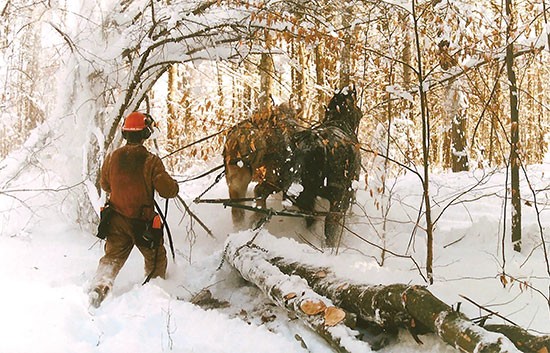
There were only a couple of us horse-logging then. My thing was that I wanted to make it work on a commercial level and not be a hobby logger. The full-time model worked for a 25-year old with no mortgage or wife or kid. I worked six or seven days every week. Keeping horses is a full-time job so you might as well be working them. That’s easy to do when you have no other commitments. At the Ripton School, I had a mattress and a sleeping bag. I’d set up a hobble for the horses in the woods and I’d sleep in the trailer.
I wouldn’t know where to begin in talking about do’s and don’ts with horses. I do know there are more don’ts than do’s. For one, you can damage or ruin a horse’s psyche really, really easily if you scare him. They are a big flight animal so their instinct when they’re not comfortable is to run. It’s just a bad situation when you have runaways, and it’s hard to correct.
The best thing you can do for a horse is work him all the time. That rarely gets done now.
If he works 9 to 10 hours, six days a week, you’re going to have a pretty good horse. After a few weeks of training, he’ll be fine. If you put him with an experienced horse, then you don’t have to do a lot of training.
Landings were always a hassle because everything has to be left so a big truck can access it. You can’t ask a trucker to move a dozen times in order to get a load. I had a system where I would wrap a chain around a tree, hang a big pulley block off it, and then run a rope through it with a set of tongs on one end and a chain on the other end. Every hitch, I’d take the tongs out and find the fulcrum of the tree. Then I’d take the chains at the other end and hook them into the whiffletree of the horses. They’d pull that tree right up on the pile. I could put 10,000 feet of logs and 12 cords of material all in one spot. So I ended up with really tidy piles and didn’t need two acres for a log landing. All it took was a suitable spar tree.
I had some great summer interns, but training took too much time and I had to stop. It didn’t occur to me how much liability exposure there was. I can’t even remember if I had workmen’s comp. That’s just insane, but at the time I was naïve.
Toward the end of my horse-logging career, I bought a 1962 John Deere bulldozer to push stuff around on landings and to build access roads. The problem is once you get anything hydraulic, even a 40-year-old bulldozer, you understand why people don’t horse-log anymore. A good machine is so much easier on your body and your time. You turn the key off on the weekend, go home, and don’t worry about feeding the horses or finding them water.
I got married at 27, had our first kid at 28, and all of sudden there were places I’d rather be than working in the woods on weekends. All those things change your priorities, and you morph from one thing to the next. The last couple years I worked with Larry Altman, who had a cable skidder. I would cut and bunch logs in the woods with horses. He’d skid them to the landing. I learned that horses were an excellent bunching tool. You can get to the stump quickly without having to do any kind of road or access work. So, we did really well and could compete for small jobs with fully mechanized loggers.
I used to get approached all the time by young people who wanted to get into horse-this or horse-that. So, I know they are out there. But right now, it’s hard to picture that happening.
It’s a lot of work and takes a huge toll physically. You are on your feet bunching and jogging with horses from 6 in the morning until 5 in the afternoon. It’s just brutal. I can remember getting up in the morning. I’d go down the stairs, putting two feet on a stair at a time. I was just that sore and whipped. You realize that if that’s the case at 29, what’s 39 going to look like?
If someone wanted to horse-log commercially today, they’d have to be the right person or it’s not going to work. Consider the options: One is to run behind horses all day and work 80 hours a week; another is to sit in a cab, operating technology that looks like a video game, where you’ll make more money and be able to have full insurance coverage. If you wanted to be more traditional, I’d be quicker to recommend a small setup – two guys with two chainsaws, a small cable skidder, and possibly a bulldozer to do prep work. They could make a good living if they’re willing to put in the time and be smart about it. Horses just add another layer of difficulty. I was banking on the notion that people would take less in stumpage or spend more to have their land harvested with horses. That’s true in select cases, but not enough for most loggers to do it commercially.
Horse-logging seems like more of an avocation than a vocation today. That was what I was trying to do differently. I did make a living, but it took its toll.


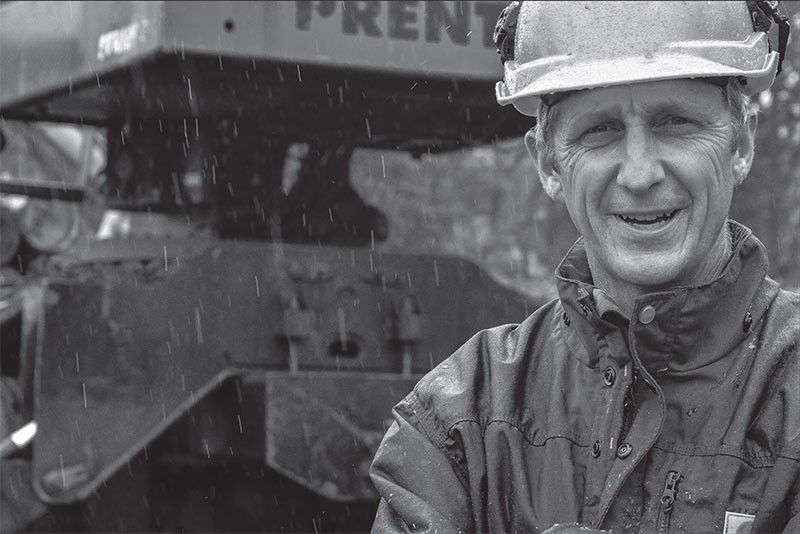
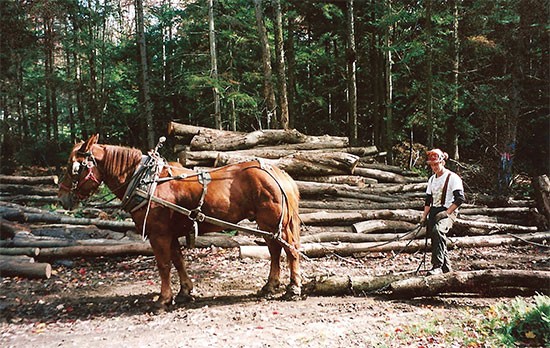
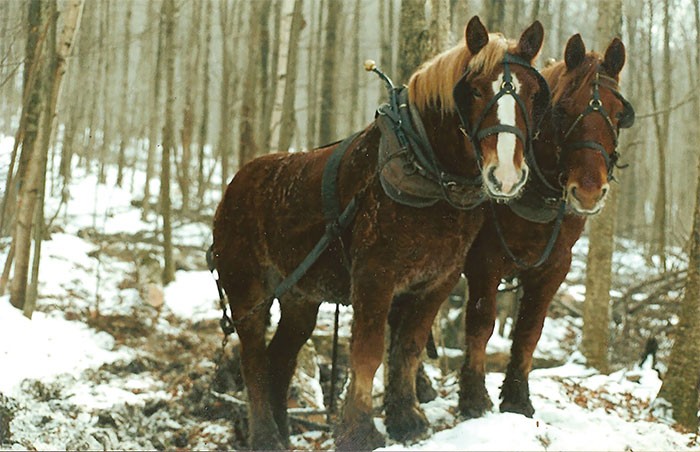
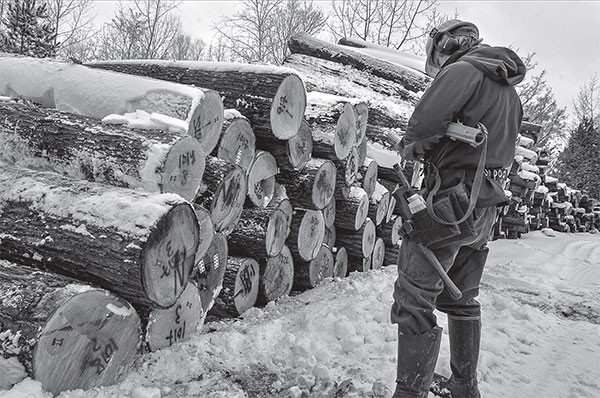
Discussion *